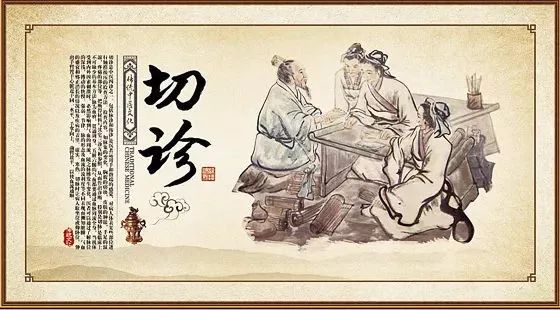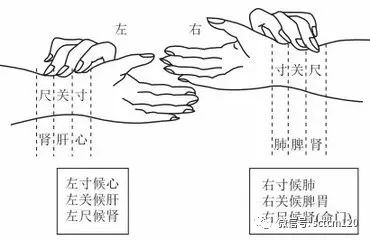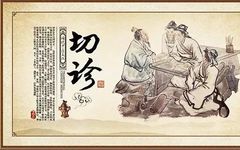The culture of Traditional Chinese Medicine (TCM) is profound and has a long history. The four diagnostic methods, known as “Si Zhen” (四诊), include observation (望), listening (闻), inquiry (问), and palpation (切). As fundamental methods of TCM diagnosis, observation involves assessing the complexion; listening involves hearing the sounds of the body; inquiry involves asking about symptoms; and palpation involves feeling the pulse. In this issue of TCM culture, Wanwu Chun Medicine will interpret the four diagnostic methods for our friends.

Palpation diagnosis refers to a method where the doctor uses their hands to touch, press, and apply pressure to specific areas of the patient’s body to obtain important diagnostic information. This typically includes pulse diagnosis (脉诊) and palpation diagnosis (按诊).

Pulse Diagnosis (脉诊)
Pulse diagnosis is a method where the doctor uses their fingers to press on the patient’s pulse to detect the pulse quality and diagnose diseases.
1. Pulse Diagnosis Locations
The commonly used pulse diagnosis location is at the radial artery on the wrist, known as “Cunkou” (寸口), also referred to as “Qikou” (气口) or “Maikou” (脉口).
2. Pulse Diagnosis Method
When taking the pulse, the patient should sit or lie down with their arm extended at the same level as the heart, palm facing up, and forearm flat to ensure smooth blood flow.
To take the pulse, position three fingers: first, place the middle finger on the radial artery at the styloid process of the radius to locate the “Guan” (关), then use the index finger to locate the “Cun” (寸) at the distal end, and finally use the ring finger to locate the “Chi” (尺) at the proximal end. The three fingers should be arranged in a bow shape at the same level, using the pads of the fingers to feel the pulse. The spacing of the three fingers should be adjusted according to the patient’s height; if the patient is tall, the fingers can be spaced wider, while if the patient is shorter, the fingers should be closer together. The arrangement of the fingers should be neat to ensure the accuracy of the pulse shape.
For children, the “Cunkou” area is small and cannot accommodate three fingers, so one finger (thumb) can be used to locate the “Guan” without subdividing into three parts. For children under three years old, the pulse can be replaced by observing the fingerprints.
During pulse diagnosis, three levels of pressure are used: initially light pressure to feel the floating pulse, known as “Ju” (举); then moderate pressure to feel the middle pulse, known as “Xun” (寻); and finally heavy pressure to feel the deep pulse, known as “An” (按). Depending on clinical needs, the sequence of light, moderate, and heavy pressure can be repeated or applied in reverse order, or a single finger can be used to press directly. Each of the three parts (Cun, Guan, Chi) has three levels: floating, middle, and deep, referred to as the “Three Parts and Nine Conditions” (三部九候).


Palpation Diagnosis (按诊)
Palpation diagnosis involves touching, pressing, and applying pressure to the patient’s skin, limbs, and specific acupoints to assess changes in the body. Common palpation sites include the chest, abdomen, skin, limbs, and acupoints. For example, the left breast under the heart apex reflects the fluctuation of the “Zong Qi” (宗气).
Pulse diagnosis is a unique diagnostic method in TCM, developed from the summaries of predecessors. Although there may be some deviations at times, the four diagnostic methods complement each other to make accurate diagnoses. This issue of TCM culture on “Wang Wen Wen Qie” (望闻问切) comes to a close. For more medical culture, please follow the Wanwu Chun Medicine public account~
Hubei Wanwu Chun Medicine Co., Ltd.
Phone: 027-83557280Address: No. 1, Jinjia Dun Special, Wuhan Tianjie, Wuhan, Hubei ProvinceWebsite: www.hbwwcyy.comEmail: [email protected]

In a healthy world, everything welcomes spring.

